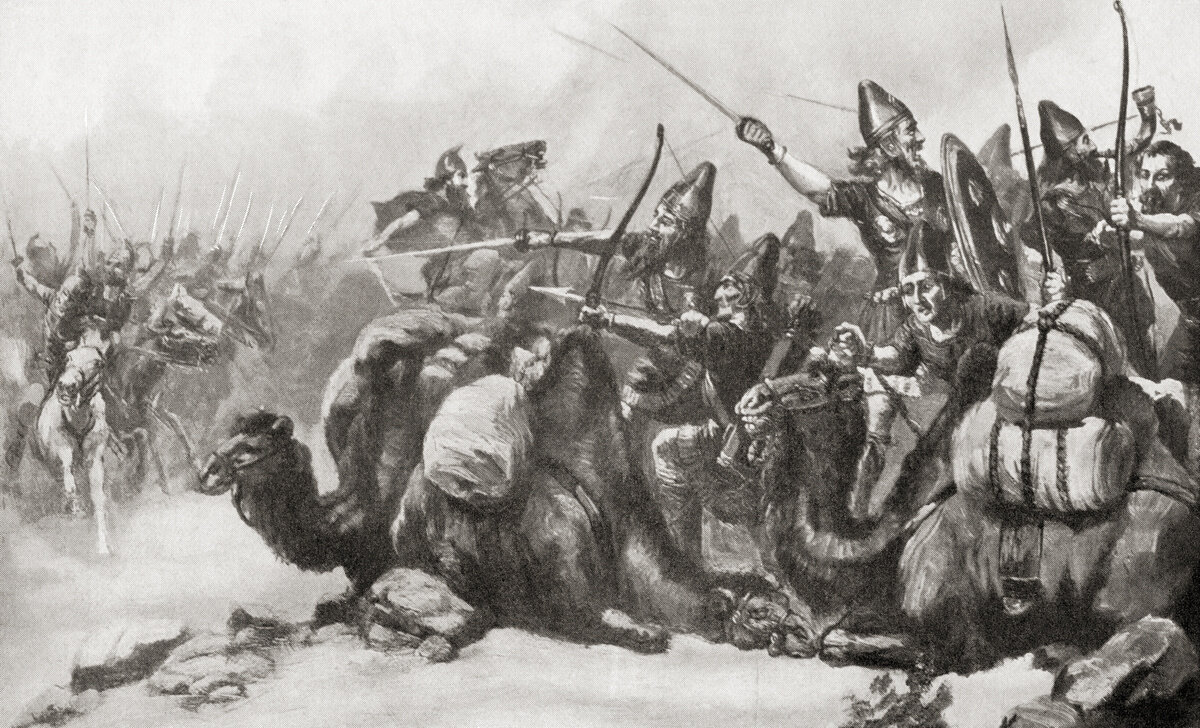Persian conquest of Lydia: remains of Achaemenid soldiers unearthed in western Türkiye

TEHRAN - Recent archaeological discoveries in the ancient Lydian city of Sardis, located in the western Manisa province of Türkiye, have unearthed human remains believed to be linked to a significant historical event: Persian conquest of Lydia.
These findings, which include the skeletal remains of two soldiers, may offer new insights into the military campaigns that shaped the region’s ancient history.
The excavation team, led by Nick Cahill, an esteemed art historian from the University of Wisconsin, made this remarkable discovery while exploring the ruins of Sardis, according to a report by Anadolu Agency.
The site, once the capital of the Lydian Empire, played a pivotal role in the history of western Anatolia. Sardis was the birthplace of gold and silver coinage and was known for its wealth and influence in the ancient world. However, it also became a battleground during the Persian expansion under Cyrus the Great, marking the end of the Lydian Empire.
Cahill and his team identified the remains as those of two young male soldiers, estimated to have been between 20 and 25 years old at the time of their deaths.
The bones revealed signs of trauma consistent with injuries inflicted by swords or other sharp weapons, suggesting that the soldiers met a violent end.
One of the most intriguing aspects of the discovery was the presence of a small stone clutched in the hand of one of the soldiers, which Cahill speculates could have been part of a slingshot used during the conflict.
“The fact that one of the soldiers was still holding a stone in his hand when we uncovered the bones is quite telling,” Cahill remarked. “It suggests that these men were actively engaged in battle when they were struck down.”
The remains were found among the collapsed ruins of a brick city wall, with no evidence of a formal burial. This led Cahill to hypothesize that the soldiers were likely defeated by Lydian forces and left unburied amid the chaos of the city’s fall. The discovery of a heavy iron helmet nearby further supports the idea that these soldiers were part of a significant military engagement.
These findings provide tangible evidence of the Persian conquest of Sardis, a turning point in the region’s history. The Battle of Thymbra, which took place in 546 BC, saw the forces of Cyrus the Great clash with those of Lydian King Croesus. Despite Croesus’s wealth and military strength, the Lydians were ultimately defeated, leading to the fall of Sardis and the incorporation of Lydia into the rapidly expanding Achaemenid Empire.
The Persian invasion of Lydia not only marked the end of the Lydian Empire but also had far-reaching consequences for the wider region. Under Persian rule, Western Anatolia underwent significant changes, with the imposition of Persian administrative practices and cultural influences. The destruction of cities like Sardis, once known for their splendor, underscores the devastating impact of the Persian campaigns on the local populations and their way of life.
Cahill emphasized the historical significance of the discovery, noting that it provides a rare glimpse into the realities of ancient warfare and the human cost of empire-building. “These bones and the associated artifacts offer a poignant reminder of the battles that shaped the course of history in this region. The Persian conquest of Lydia was a defining moment, not just for Sardis, but for the entire ancient world.”
As the excavation continues, researchers hope to uncover more evidence that will further illuminate the events surrounding the Persian invasion and the eventual fall of Sardis.
AM
Leave a Comment